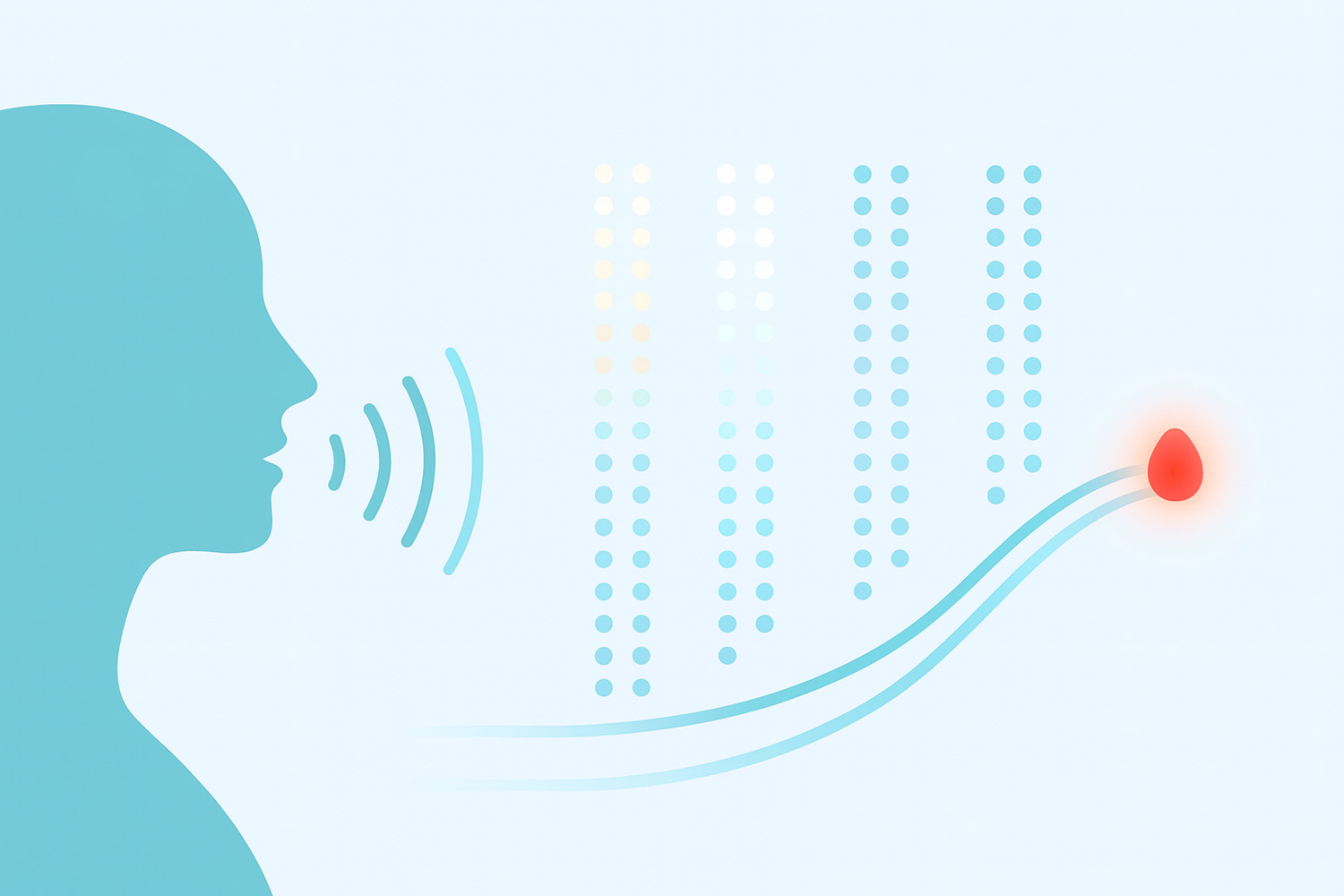From 4,000 to One: Voice-Based Muscle Testing for IC Selection


The Voice-Scan method that turns choice overload into a 60-second shortlist.
Why this exists
Picking ICs from a catalogue of thousands can feel like guesswork. Our Voice-Based Muscle Testing(VBMT) turns a short voice cue - “Scan” - into a fast way to narrow the field, round by round, until you’re left with a single IC/Complex to try first.
This is not a medical diagnostic tool. It’s a prioritization aid: a quick, structured way to choose a starting point you can evaluate with real-world outcomes.
Muscle testing, in plain terms
“Muscle testing” (popularly known as applied kinesiology in non-clinical settings) is a way to rank options by observing small changes in motor stability when you consider each option. You present a question or stimulus (“Is A suitable for me right now?”) and look for a binary proxy - traditionally, how steadily a muscle resists light, consistent pressure. It’s not proof, but many people use it to triage choices quickly.
A science-literate explanation (how it could work)
Muscles don’t “know” answers - your nervous system does a lot of rapid, automatic integration:
- Autonomic load & interoception: Your brain constantly predicts and adjusts bodily state (breathing, heart rate variability, micro-tension). Different options or intentions can shift this state by tiny amounts.
- Motor output as a readout: Those state shifts influence motor coordination - how stable or “easy” a movement (or posture, or phonation) feels in that instant.
- Ideomotor & attention: Subtle, often unconscious changes in attention and expectation (the ideomotor effect) alter muscle recruitment and voice control by small, measurable degrees.
- Predictive processing: The brain acts like an inference engine; when an option “fits” better with your current internal model, the system tends to show more efficient coordination (less noise, steadier timing).
In short: tiny, involuntary changes in neuromotor control can serve as a proxy signal. VBMT harnesses the voice, which is also muscular activity, to capture those changes more consistently than a manual arm push.
Why use the voice?
Speaking engages respiratory, laryngeal, and articulatory muscles that are closely coupled to autonomic state (breathing pattern, vagal tone, arousal). That’s why your voice subtly shifts with focus or stress. By standardizing a short utterance, we can analyze micro-features - timing stability, micro-tremor, phonatory steadiness - that tend to reflect coordination and ease.
The Infopathy Column-Scan Protocol (how the website works)
You’ll see a large table of ~4,000 ICs/Complexes split across five columns. We narrow the set in rounds, each time selecting one column to keep. Typically it takes about five rounds (sometimes a sixth) to reach a single IC/Complex.
Setup:
- Quiet room, stable posture.
- Microphone 15–20 cm from your mouth (best if you use headset with microphone).
- Breathe normally. Relax your jaw and shoulders.
Round 1
- Look at the full table (all five columns visible).
- With a neutral, curious mindset, say “Scan” five times at a steady pace while looking at the table:
- Scan … Scan … Scan … Scan … Scan
- The system analyzes your voice and selects highly ranked column (1–5).
Round 2 (and subsequent rounds)
- The "surviving" ICs are redistributed evenly across five new columns.
- Repeat the same voice cue while viewing the five new columns:
- Scan … Scan … Scan … Scan … Scan
- Keep the top column again.
- Continue until one IC/Complex remains.
With ~4,000 starting items, the sequence typically shrinks like this: ~800 → 160 → 32 → 6–7 → 1–2 → 1(≈5–6 rounds).
Getting reliable signals
- Consistency beats intensity. Same phrase, pace, mic distance, and posture each round.
- Neutral curiosity. You don’t have to force neutrality; just avoid trying to “will” a specific answer.
- Confirm with outcomes. Use the chosen IC as directed and notice practical changes you care about (sleep quality, comfort, focus, training recovery, etc.).
Where VBMT fits in your IC workflow
- Define your goal for today. (e.g., afternoon focus, post-workout recovery.)
- Run Column-Scan to narrow thousands to one.
- Track how you feel and any objective markers you use.
- Iterate weekly or when your goal changes.
FAQ
Does repeating “Scan” bias the result?
We use a short, neutral word to minimize semantic load. Because the same cue is used every round, any bias is consistent, which helps comparisons.
We use a short, neutral word to minimize semantic load. Because the same cue is used every round, any bias is consistent, which helps comparisons.
Why five columns?
Five-way branching offers a good balance of speed (fewer rounds) and stability (enough data per decision) for large catalogs.
Five-way branching offers a good balance of speed (fewer rounds) and stability (enough data per decision) for large catalogs.
Can I influence the outcome by wanting a specific IC?
Strong expectations can shift attention and tension (that’s human). The best practice is curiosity - note the result, then confirm with real-world use.
Strong expectations can shift attention and tension (that’s human). The best practice is curiosity - note the result, then confirm with real-world use.
Try Infopathy’s Voice-Based Muscle Testing (Vice-Scan)
Ready to turn a 4,000-item catalogue into one practical starting point - in about a minute?
Run the Volum-Scan on our site, follow the “Scan ×5” prompts each round, and let your voice help you shortlist smarter.
Run the Volum-Scan on our site, follow the “Scan ×5” prompts each round, and let your voice help you shortlist smarter.
I was pleased with first try using the link here
我很高興第一次嘗試使用這裡的鏈接